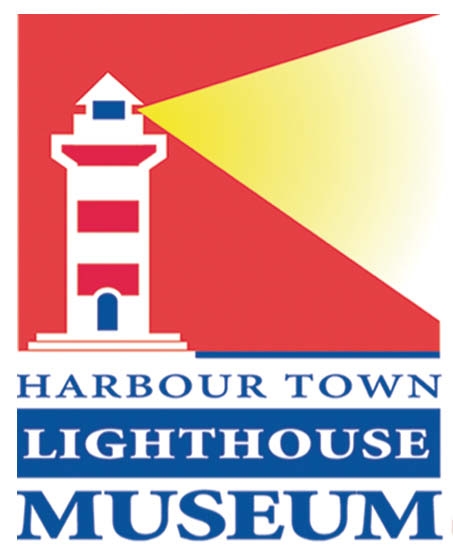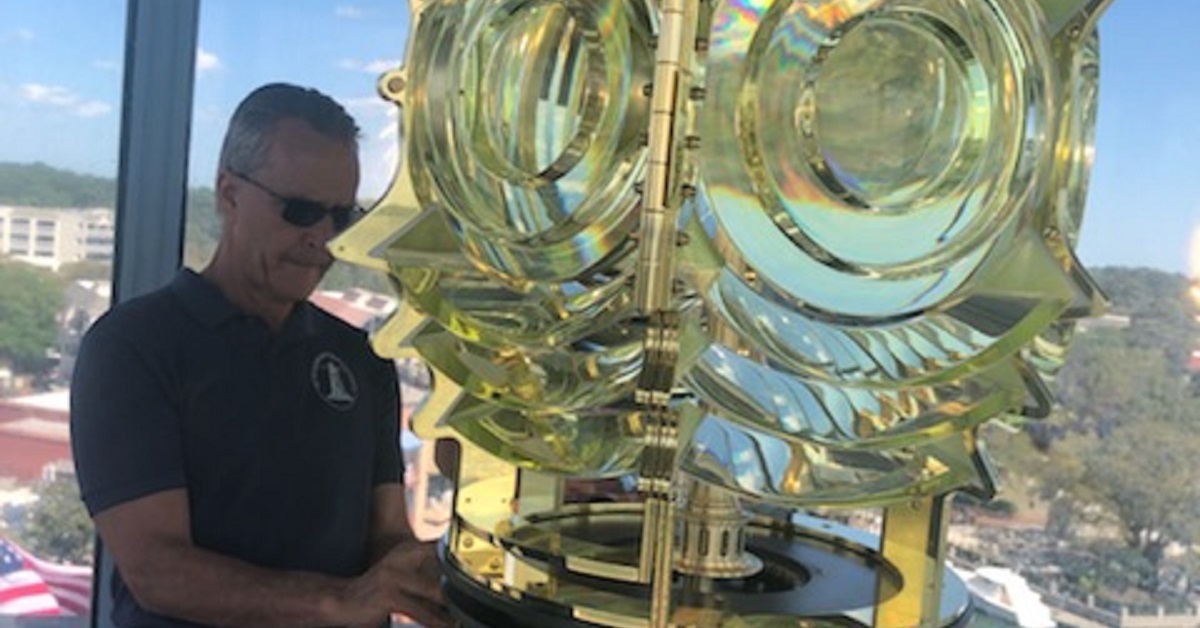Musings
Island Icon Adds a Crowning Achievement
The fabled story of the Harbour Town Lighthouse added a chapter once again on March 25, when the lighthouse team installed a genuine Fresnel lens to further the power of the light that blossoms from the top.
The brilliant reach of the Harbour Town Lighthouse and the ability of this icon to touch the imaginations of people all over the world was already well established. Its power to serve and to symbolize the beckoning promise of Hilton Head Island sometimes seems like a sort of miracle. And yet, behind the lighthouse as we know it today, there is a long story of vision and persistence, of nurturing and growth, of imagination and perspiration.
The lens itself has been said to resemble a giant beehive. Like a barrel composed of dozens of facets, the science behind the Fresnel lens was precocious when it first appeared in the time of Napoleon. It was, in fact, the product of the first forays into researching light as composed of waves. The urgency of the breakthrough, two centuries ago, was to further the safety of people who travel by sea.
A Product of Partnership
The new Lighthouse lens is a replica of the original Fourth Order Fresnel lens, created by Dan Spinella, a Florida artist and engineer who is credited with Disney designs and devoted to authenticity. The Fresnel lens now beckoning from the Harbour Town Lighthouse extends the reach of its beacon and brightens the impulse it sends far and wide.
Far more than that, the Fresnel lens also symbolizes a dedication to the authentic, to the genuine. It is the result of generations of care, the work of people who took the lighthouse seriously, who saw to it that the lighthouse became the welcoming point for millions. The lens is not only a practical enhancement, but also, without doubt, a crowning achievement.
Partnership was a key ingredient in making the Fresnel lens a reality in the Harbour Town Lighthouse. Rob Bender, Director of Recreation and Marine Operations for the Sea Pines Resort, teamed with property manager Mark King and lighthouse keeper Nadia Wagner to bring the project to fruition.
“It’s a great partnership,” Rob said.
Persistence, over the course of several years, at last enabled the partnership to commission the creation of the lens and see to its installation.
“It took a lot of patience,” Rob said, “and it was well worth it.”
Beyond Symbolic
Many islanders, and even some visitors, are familiar with how the lighthouse came to be. Visionary Sea Pines founder Charles Fraser insisted that a sense of place was needed, a marker or symbol for the world-class resort he was bringing to life. Where Charles’s father saw a stand of profitable timber, Charles saw a future in which people from all walks of life could enjoy the relaxation and recreation he had traveled widely to research. Such a resort would call for a symbol, a magnet for the imaginations of others. For this role, Charles proposed a lighthouse.
Even Charles’s close associates questioned the endeavor, to the point that “Fraser’s folly” is still a nickname known to insiders for the inspiration that became the Harbour Town Lighthouse. The reason this nickname seems such a poor fit today is that Charles was followed by others, who took the vision to heart.
Mark King, founder of The Club Group, a successful property management firm in Sea Pines, took charge of the lighthouse in 1989. In a short while, Mark recognized that the vacant Harbour Town Lighthouse not only could house important services and attractions, but also needed to assume that role.
“Standing as a vacant symbol was more than a missed opportunity,” Mark said, “It was a situation that needed fixing.”
A Child’s Fascination
The catalyst for transforming the Harbour Town Lighthouse from symbol to service came in the form of the inimitable energy and enthusiasm of lighthouse keeper Nadia Wagner.
“Nadia’s arrival was nothing short of a Godsend,” Mark said.
Visiting the Croatian coast many times, from her home in Serbia, Nadia had been fascinated since childhood by the lighthouses located there.
“People tended fires on the Croatian coast for a thousand years,” Nadia said, “to help ships travel safely, long before lighthouses were even invented.”
Nadia’s own fascination extends back through time, too.
“I first read about August Fresnel 35 years ago,” Nadia said, “and the breakthrough his lens brought to navigation. I never dreamed then that I would grow up to become a lighthouse keeper myself.”
Imagining the Inside
With Nadia aboard, the Club Group established The Shoppe at the Top in the Lighthouse, in 1994.
“In the beginning,” Mark King pointed out, “Nadia did it all. Every piece of merchandise went up those 114 steps in Nadia’s arms.” Nadia, characteristically, reminds us that Mark pitched in, too, to stock the Shoppe in those early days.
Generations of helpers followed, many times including other women from central and eastern Europe, whom Nadia was happy to mentor in hospitality.
“I cannot imagine that any one person has greeted more Hilton Head Island visitors than Nadia,” Mark said. “Her welcome, her personality, is what so many remember. Nadia herself is a big reason the Harbour Town Lighthouse has been so successful.”
With the help of local historian and writer Porter Thompson, Mark and Nadia began in 2001 to create exhibits that enliven each of the nine landings that lead to the top. From prehistoric shell circles and pottery to the native islander heritage of our Gullah forebears, and on to the invention of a nature-friendly resort, the story is surprising. People discovering the museum within the lighthouse find it remarkable and unexpected. More recently, the ground-floor shop was reimagined to offer “keepsakes, rather than souvenirs,” and dubbed the Maritime Gift Galley.
How a Wave Began
Known as “the invention that saved a million ships,” the Fresnel lens resulted from research that began early in the 19th century, in France, by civil engineer and physicist Augustin-Jean Fresnel. While Fresnel is credited with winning acceptance of the wave theory of light, the practical application of his discoveries and deep insights is perhaps best demonstrated by the lens he invented in 1822, and which still bears his name.
The hazards to life and commerce that prevailed prior to invention of the Fresnel lens were so severe that a commission was appointed by Napoleon in 1811 to discover how to empower lighthouses to extend their reach, giving mariners a better chance at successful shoreline navigation – and survival. Fresnel brought the fruits of his research to the commission, and on July 25, 1823, the first lighthouse to receive a Fresnel lens proved, as expected, to be visible to the horizon, about 20 miles distant.
Extraterrestrial Sculpture
To describe the look of the Fresnel lens itself, a friend in the movie business said, “it’s as if somebody specified a sculpture for a science fiction picture, the bust of a creature from another world.” Designed to use both reflection and refraction to focus light energy, and prevent it from dissipating, the crystalline lines of the Fresnel lens come by that futuristic look honestly. It is hard to believe that the science behind it was discovered two centuries ago.
Only the urgency of the need to protect seafarers better seems to explain how such a breakthrough could come to pass. Now, at the Harbour Town Lighthouse, the brilliance behind it is celebrated, the beauty of it is enshrined, and the beacon of it becomes a fitting extension of the vision that began in Harbour Town and beckons visitors from around the world to this day.

